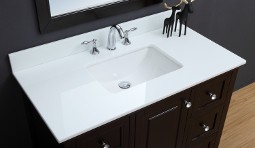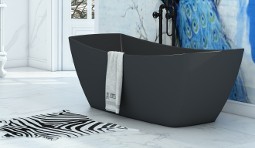
Mould and mildew is undoubtedly the dreaded scourge of any house that most of us will have to deal with at some point. Mould is prevalent in damp conditions, so bathrooms, basements, and kitchens are usually the most at risk. Often removing mould is our lowest priority. It’s a fungus that smells, fells like slime, and gives out a foul and musty odour. Mould will continue to grow throughout your home until it it is removed. Therefore, the best way to preserve your indoor spaces is to clean it away as soon as possible.
Here are some natural and eco-friendly solutions to ensure a fresh home, and banish away residual mould spores.
Mould damage
Firstly, we need to understand what we are dealing with. Mould and mildew are both different types of fungi, each needing different conditions to grow and thrive. Mould is black, green, orange, or any range of colours in between. It has a fuzzy appearance, and grows on food, or where bacteria are present. Mildew is grey or white turning yellow, brown and black, powdery, and tends to prefer wet surfaces such like bathroom walls, basements, and fabric.
What are the causes of mould?
Mould is caused by warm humid conditions found in bathroom showers, bathtubs, utility rooms and toilets. Mould and mildew both require certain temperatures to grow, and commonly develop in closed houses that are often damp.
In your home there will be many different causes for mould and mildew to grow. It is important to get professional help to identify the root cause of your mould/mildew problem.
The first signs of mould
The first signs of mould are almost impossible to spot. You need to use all of your senses to determine if you have a problem. First off, allergies for anyone in your home could be a sign of mould. Children are especially vulnerable to mould spores in the air, and if your child is experiencing allergies or reactions, it could be a sign of mould. Secondly, mould has a musty odour. Finally, if you see it in your home, there is a good chance it is well developed and needs to be removed. It may sound obvious, but many individuals miss the first stages of mould developing in the house, and often assume it is just dirt. If you see anything that could be mould, don’t waste time, clean it!
There are also a few things that might signal a house is more susceptible to mould infestation. Water leaks, a previously flooded interior space, or condensation is a good indicator that the environment is ripe for mould growth. Get cleaning, scrubbing, and polishing to prevent any potential outbreaks!
1. Antiseptic primer
First things first, it’s good to use an antiseptic primer; this will eliminate mould that resides on the walls and prevent you from painting over mould (which won’t kill it!). If there is damage to your walls due to mould, it is important to remove it before repainting.
2. Tee tree oil
Tee tree oil is a natural fungicide, not quite as strong as hydrogen peroxide, that is a good cleaning solution for mould. It also smells better than many other natural alternatives, ensuring that you won’t cringe while cleaning.
Tee Tree Oil is available in health food stores, pharmacies, or the supermarket
Use: Add a tablespoon of oil to a spray bottle filled with water and spray the mouldy area, wait 15-20 minutes and wipe off.
3. Vinegar
Probably one of the cheapest ways to get rid of mould, vinegar is an all-round solution to a number of household problems. Naturally anti-microbial, vinegar is sure to solve your mould/mildew issues.
Buy Plain white vinegar from your local supermarket
Use: Simply pour undiluted and directly onto the mould, let sit for 10-15 minutes, then wipe/scrub with a sponge.
4. Hydrogen peroxide
Hydrogen peroxide is a great solution to removing mould due to its effervescent nature. It is more effective than chlorine, inexpensive, and has less toxic fumes than bleach.
Readily available at the supermarket, grocery stores, or even online
Use: 3% hydrogen peroxide directly onto mould for 15- 20 minutes and then wipe dry. Always wear gloves, this substance can burn
5. Baking soda
Safe enough to eat, baking soda is the ultimate in natural mould-killing remedies. Safe for children, pets, and the whole family, baking soda is a great inclusion within your cleaning cupboard. Baking soda destroys odours left behind by mould, and absorbs moisture too.
Get it at your local supermarket
Use: Grab your spray bottle, fill with ¼ of a tablespoon of baking soda, and water, mix, and douse the mould. Scrub mould from the surface and voila! Baking soda can also be sprayed to the surface once clean to ensure mould does not return.
Source: https://www.homify.sg/ideabooks/457798/fight-household-mould-in-5-easy-and-natural-steps


































